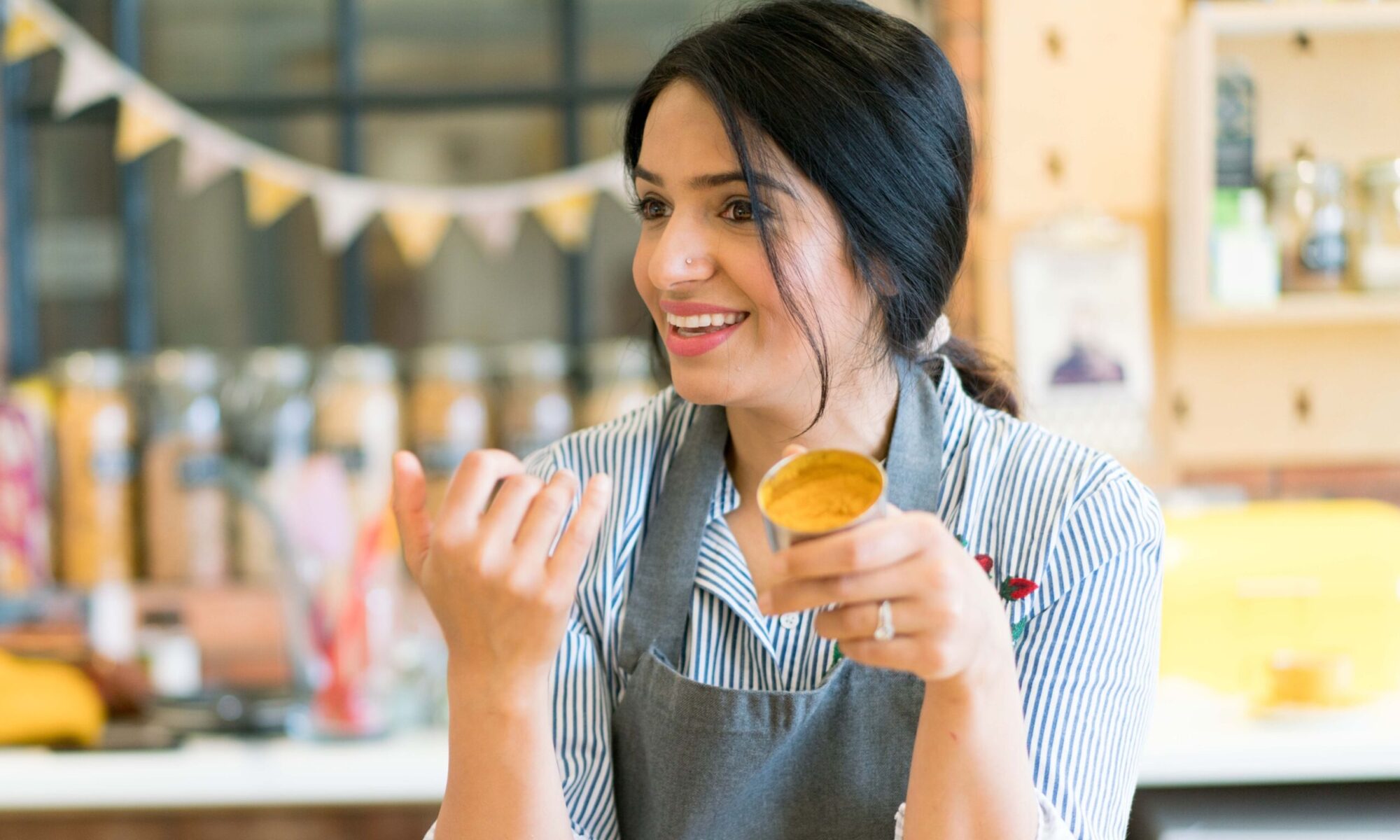
Presenting my Punjabi samosas! I didn’t intentionally make these samosas to be part of the #spiceclubstaples recipe collection but upon reflection I think they deserve a place here.

The pastry is made from plain flour, oil, salt & water = store cupboard classic. Stuffing wise, the classic is spiced potatoes & peas, but actually, you can technically stuff them with whatever you like. Sweet potato, cauliflower, carrots, cabbage, paneer – feel free to mix together what you have in your fridge to create your own bespoke samosa. I’ve made chocolate and marshmallow samosas in the past so you have permission to go crazy.

There is a step by step tutorial on my Instagram Highlights which may help with giving you a better idea on things like dough texture etc. Making samosas are best shown how to be made in person but I have tried my best to jot it all down for you in this recipe!
Little tip – once the samosas have been filled and sealed, you can actually freeze the samosas. Then, when you’re craving a fresh samosa in the future, you can simply remove from freezer, defrost and then fry until golden! Also – if you have any leftover pastry, you can cut them into rounds using a cookie cutter and then fry until light golden and crisp – these are Indian savoury tea biscuits called Papdi – we eat these alongside a hot cup of chai!
Disclaimer – samosas are a labour of love to make, but they’re ABSOLUTELY worth the effort. I hope you enjoy making (and eating) them!

Punjabi Samosas
Ingredients
To make the dough:
- 1 cup plain flour approx. 130g
- ¼ tsp carom seeds (optional)
- ¼ tsp salt
- 2 tbsp oil
- ¼ cup approx water using same vessel that was used to measure flour
To make the stuffing:
- 2 tbsp oil
- 1 tsp cumin seeds
- 2 tbsp coriander seeds crushed
- 1 tbsp ginger grated (optional)
- 8 tbsp peas (frozen peas work well)
- 4 large cooked potatoes (approx 500g in total) I cook mine in the microwave but you can also boil.
- 1 1/2 tsp salt or according to taste
- 1 tsp paprika
- ¾ tsp amchur/mango powder If you can’t source this, you can add a squeeze of lime juice
- 1 tsp garam masala
- 1-2 green chillies finely chopped
- Large handful fresh coriander finely chopped
You will also need:
- 2 tbsp plain flour mixed together with 4 tbsp water to create a thick, smooth paste (this will be our pastry glue)
- oilf or deep frying
Instructions
To make the dough:
- To a bowl, add the plain flour, carom seeds, salt and oil. Spend a couple of minutes rubbing the oil into the flour. It should create a bread crumb type of consistency. Once the oil has completely mixed in, gradually add the water little by little. Mix continuously – you are looking to create a tight dough that is quite firm. (Note, you may need to adjust the amount of water slightly depending on your brand of flour).
- Cover dough with damp cloth or cling film and allow to rest for 15-20 minutes.
To make the stuffing:
- Heat oil in a pan. Once hot, add the cumin seeds. Mix. Then add the crushed coriander seeds, ginger and peas and cook for 1 minute on medium heat. When the ginger turns light golden, turn off heat and keep aside.
- Using your hands, peel the potatoes. Then roughly mash the potatoes using your hand, into the pan. Add the salt, remaining spices and fresh coriander and mix well. Taste for salt/chilli/tartness and adjust to accordingly.
To prepare the samosas:
- Heat a non-stick frying pan on a very low heat.
- At the same time, pour 4-5” oil in a small sauce pan/wok and heat on a low heat. (We will be frying our samosas in this oil).
- Divide the dough into 4 portions and roll each one into a ball. Using a rolling pin, roll out a dough ball into a circle (approx. 8″ diameter).
- Place the rolled out circle on the non-stick frying pan for 10-12 seconds and then remove and transfer to a chopping board (cooked side down, raw side up). Be careful not to overcook the dough – we cook it slightly to help firm it up so it is easier to handle. Cut the circle in half to create 2 semi-circles.
- Spread the flour paste around all the edges of each semi circle and using both hands, fold the semi circle into a cone shape. Hold the cone and ensure that the joint of the edges creates a sealed seam in the middle of the cone. Hold this in one hand and begin to stuff with the potato mixture so the cone is 3/4 full.
- Press the filling down with your fingers and seal the top of the cone to form a triangle shape. Pinch along the top edge to ensure it is completely sealed. Repeat with the remaining dough balls.
- Once the oil is hot, add each samosa to the wok for frying. Be careful not to overcrowd the pan (it’s best to fry in batches). Fry on low/medium heat for 8-10 minutes. Turn the samosas in the oil every couple of minutes. Once done, they should be golden brown all over and the pastry should be crisp to touch.
- Use a slotted spoon to remove each samosas – being mindful to drain off as much oil as possible before draining on kitchen paper. Repeat with remaining samosas and serve with your favourite chutneys.








